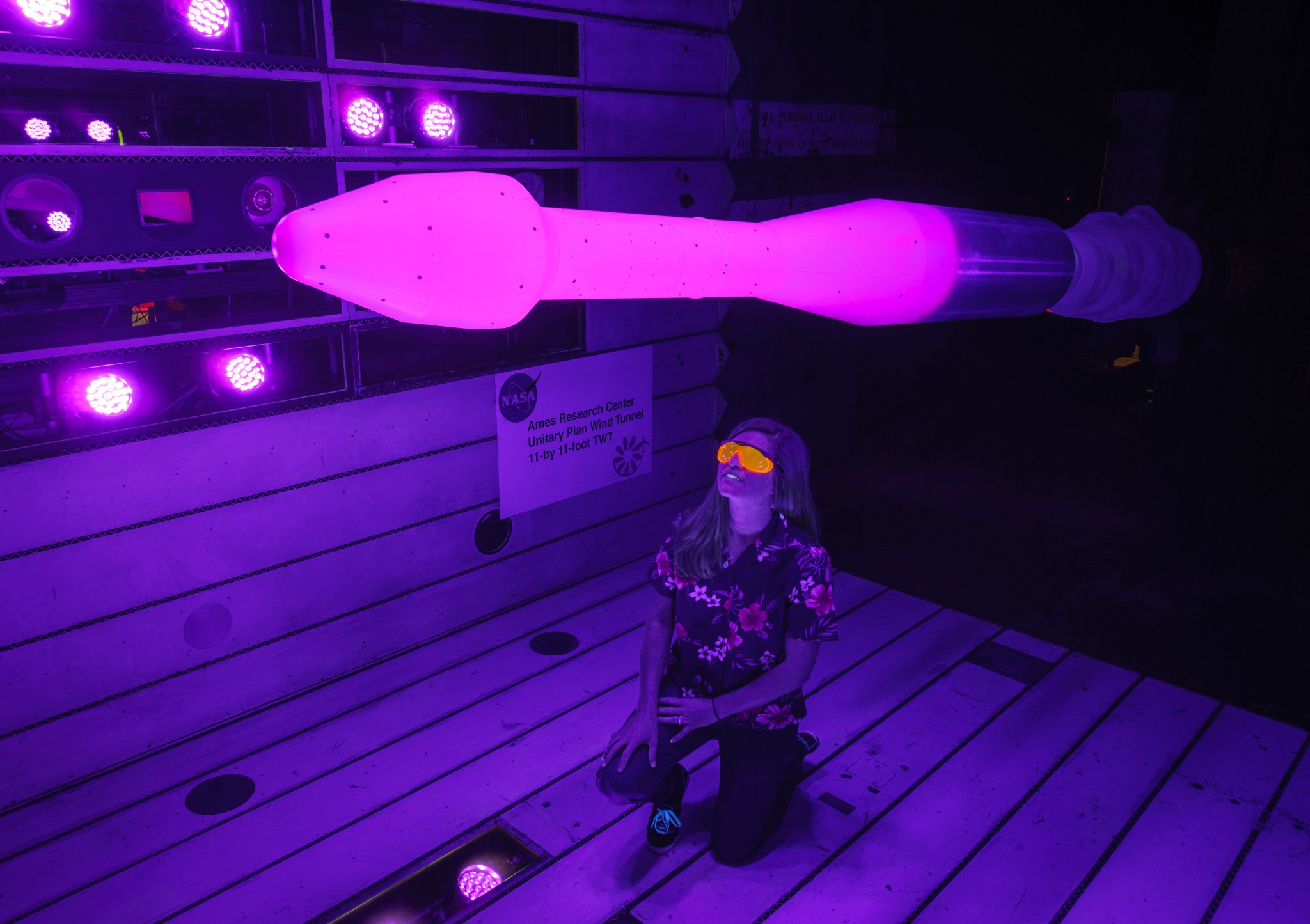A new approach has been developed for measuring fluctuating aerodynamic-induced pressures on wind tunnel models using unsteady pressure sensitive paint (uPSP). During ascent through the atmosphere, a launch vehicle and its payload experience strong aerodynamic loads. These loads have large fluctuating levels that are difficult to measure. The structural design of a launch vehicle must account for both steady and unsteady loads in order to ensure safe flight to orbit. During the design process, these loads must be estimated accurately, and wind tunnel buffet testing is still the best option.
Buffet tests require accurate measurement of the steady and fluctuating pressures at as many points on the surface as possible. However, the finite size of pressure sensors sets an upper limit of approximately 400 sensors that can be placed in a wind tunnel model, resulting in very sparse pressure measurements over the vehicle.
Early wind tunnel tests of the Space Launch System indicated that buffet loads were larger than expected.
Measurements from 213 individual pressure sensors were augmented by the use of uPSP. Results showed the extremely dense uPSP measurements provide accurate load estimates at up to 5 kHz without any approximations.
The new approach increases the density of pressure measurements by using uPSP. PSP has been commonly used in wind tunnels for 20 years to measure time-average pressure but until recently, did not have a sufficiently fast response to measure unsteady pressures. Advances in both camera technology and the chemistry of PSP have enabled the measurement of unsteady pressures.Subsequent testing indicated that the buffet estimates were very sensitive to the details of sparse, unsteady pressure data integration. The work was performed to evaluate the integration techniques by using a relatively new measurement technique.
The uPSP measurements are made by illuminating the painted model in the wind tunnel with blue light. The uPSP fluoresces red, and the brightness of the fluorescence is proportional to the pressure acting on the paint. Pressure fluctuations at up to 5,000 Hz can now be resolved and measured.
The uPSP measurement technique was verified in a large production wind tunnel (the 11- by 11-foot Transonic Wind Tunnel) during a recent test, in which traditional pressure measurements were compared to those made by uPSP. The verification testing of uPSP was based on measuring the unsteady loads on a wind tunnel model of a generic launch vehicle (see picture). Measurements from 213 individual pressure sensors were augmented by the use of uPSP. Results showed the extremely dense uPSP measurements provide accurate load estimates at up to 5 kHz without any approximations. Comparing the uPSP loads with the estimates from the pressure sensors showed the strengths and weaknesses of the sparse-data correction schemes.
In most areas of the generic launch vehicle model, the sparse data integration methods overestimated the buffet loads. However, in some areas, buffet loads were underestimated. More work is underway to determine ways of identifying features of the unsteady pressure field that lead to over- and under-prediction of the unsteady buffet loads.
The uPSP measurement technology used in these tests is the result of government-funded research by NASA and the U.S. Air Force Arnold Engineering and Development Center (AEDC). The particularly fast PSP used for this test was developed by Innovative Scientific Solutions, Inc. The system used for the test was developed at the AEDC. This test is the first time uPSP has been employed in a large transonic wind tunnel at NASA and is another in a series of PSP collaborations between AEDC and NASA.
For more information, contact Robert Youngquist, KSC, robert.c.youngquist@nasa.gov































